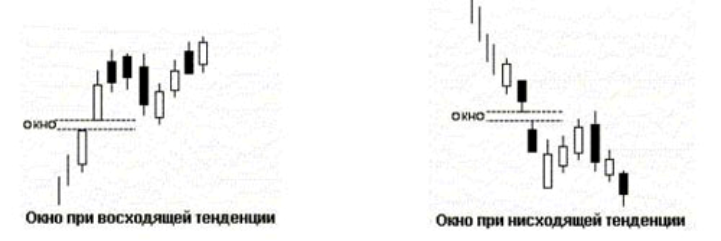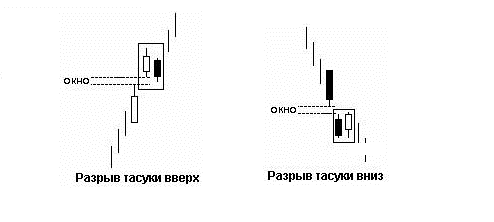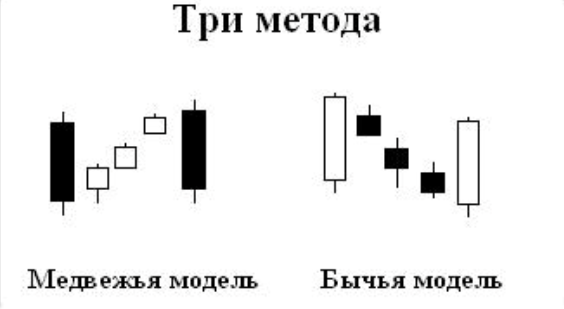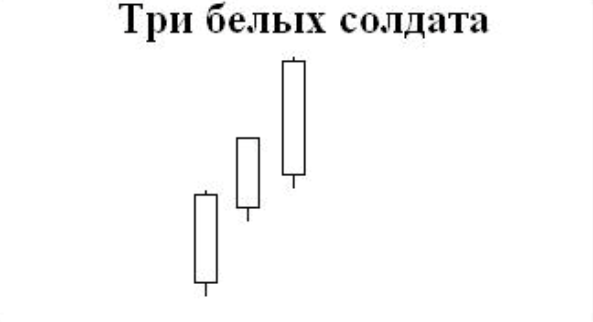Trend continuation candles
All those teaching textbooks on stock trading, as well as their author, unanimously tell us that trading should only be done in the direction of the trend, but not against it.
that trading should only be done in the direction of the trend, but not against it.
Indeed, trading with the trend is the most profitable activity, because if you have become in the direction of the global market movement, you do not know the psychological stress of a deposit drawdown, unlike someone who entered a position against it.
The growth of profits on your transactions will not force itself either. It would seem that everything is simple, I found a trend and entries in its direction, but in practice we all face problems.
The main problem with trading with a trend is that you do not know whether you are entering at the top and the final phase of the end of the trend or whether it will continue to move further in the same direction.
This is an age-old problem that every trader faces, because you can never say one hundred percent whether the trend will move in that direction or not.
One of the most popular and well-known trend continuation patterns is the so-called “Window”. The principle of the pattern is very simple, if you see two candles between which a gap in quotes has appeared, this is an excellent signal that players, having gained strength, are again leading the trend to new price lows or highs. This phenomenon is also called a gap, but not in the classic form that you see on Monday when the market opens, but one that arose during active trading.
Many will probably say that the price always tends to close the gap and, as a rule, returns to the point where this gap began. Indeed, this statement is true, but this rule applies mainly to a large gap that occurs on Monday when the market opens, but the “Window” candlestick pattern is formed due to the strong pressure of players during the trading session, so the price immediately moves sideways after the gap trend. You can see an example of a “Window” candlestick combination in the picture below:

The second no less popular trend continuation candlestick combination is the Tasuki Gap. These trend continuation candles are a modified version of the previous Window pattern. This candlestick combination exists for two trend directions, namely bullish and bearish.
To say that there is a gap in front of you for a bullish trend, a gap (window pattern) with two bullish candles between them should appear in front of you. The second candle after the gap should be bearish and if it does not close the window, then you can safely enter a buy position. For a bearish trend, the tasuki gap looks the other way around, namely, a window is formed between two black candles, and the second one after the gap should appear bullish.
If the gap was not closed by it, then you can safely enter the sale in the direction of the main trend. The “Shuffle Break” candlestick pattern is good because you enter it as if on a minor pullback, and not in the main course of the movement. You can see an example of a candlestick combination in the picture below:
 The third candlestick combination of trend continuation is the so-called “Three Methods”. There are both bullish and bearish variations of this candlestick pattern. The bullish option looks like this: a long bullish candle appears (white) and behind it a mini rollback of three small bearish candles is formed, which together do not exceed the size of the first bullish candle.
The third candlestick combination of trend continuation is the so-called “Three Methods”. There are both bullish and bearish variations of this candlestick pattern. The bullish option looks like this: a long bullish candle appears (white) and behind it a mini rollback of three small bearish candles is formed, which together do not exceed the size of the first bullish candle.
If you see such a combination, you can safely enter to buy. The bearish version of this candlestick combination looks like this: a large bearish candlestick appears, and behind it a mini rollback of three small bullish candlesticks is formed, whose total size does not exceed the first bearish candlestick. If such a picture appears in front of you, then you can safely enter a sell position.
The peculiarity of this candlestick combination is that you enter the position after a rollback, thus, without having a large drawdown, you get a good profit. Please note that if the size of three new candles exceeds the first one, then the pattern is considered failed and its signal should be ignored. You can see an example of the “Three Methods” candlestick combination in the picture below:

The fourth candlestick combination of trend continuation has the symbolic name “Three advancing white soldiers”. This pattern often occurs when the price has made a small pullback in a bullish trend. Its essence is very simple: if three large bullish candles appear, and each of them closes higher than the previous one, this is a signal that the rollback is over and it’s worth entering a buy position.
There is also a variant of the pattern for a bear market and it is called “Three Crows”. It is formed if there was a pullback in a bearish market, and then three bearish candles appeared, and each of them should close higher than the other. If one of the candles in both options closes below the previous one, then you may have a braking pattern in front of you, which indicates the weakness of the main trend.
Therefore, be careful in identifying the pattern. An example of the “Three Advancing White Soldiers” candlestick combination can be seen in the picture below:

In conclusion, I want to say that the configurations of Japanese candlesticks should become your main assistant in determining certain situations on the market, since by analyzing them you can always enter the current trend and exit it before the price sharply turns against you.
You should understand that candlestick analysis primarily works well on stocks and, due to high volatility, is a little weaker on the foreign exchange market. If you use these models specifically in the Forex market, then I would recommend that you check the signals with some kind of indicator http://time-forex.com/indikators or with the news background.

